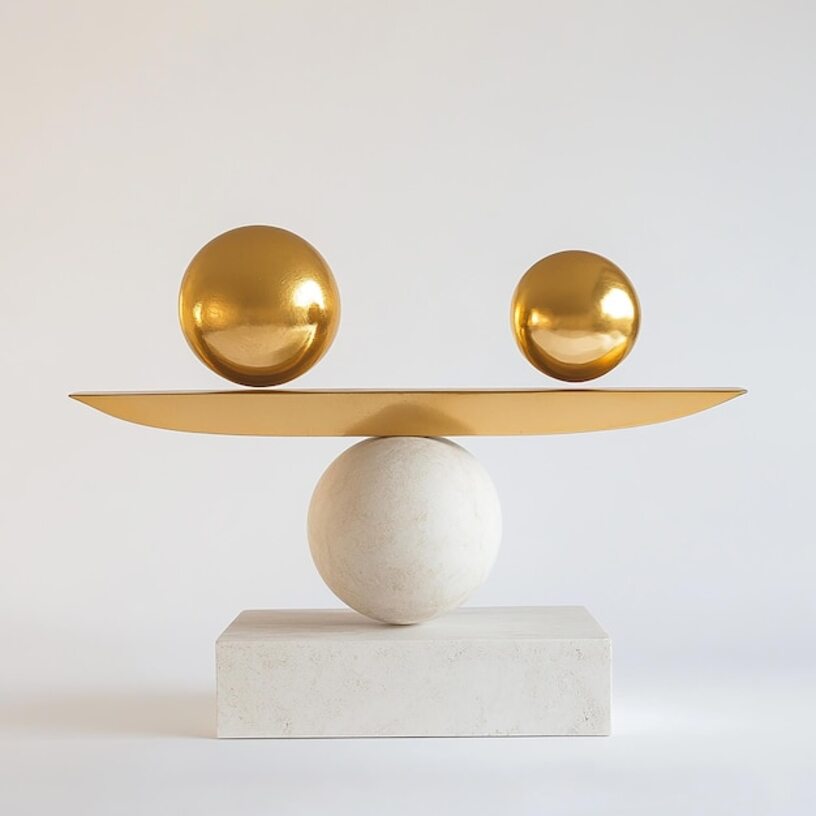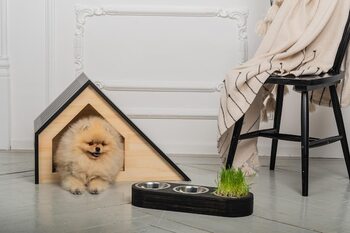Balance between the modern and the classic in your urban home

The balance between the modern and the classic in your urban home is key to creating a space that reflects your personality and lifestyle. In an environment where contemporary aesthetics blend with rich cultural heritage, achieving this fusion can transform your home into a unique refuge. Discover how to integrate traditional elements with avant-garde touches so that every corner tells a story, while maintaining the functionality and comfort you need in urban life.
The importance of materials: wood, metal, and textiles
The choice of materials is essential to achieve a balance between the modern and the classic in your urban home. Wood, with its warmth and natural texture, provides a cozy feeling that contrasts perfectly with cooler, contemporary metallic elements. Incorporating wooden furniture or details not only adds character to the spaces but also establishes a bridge between the traditional and the current. For example, a recycled wood dining table can be the ideal focal point in a setting decorated with modern designer chairs, creating a visual dialogue that celebrates both aesthetics.
Metal, for its part, presents itself as the perfect ally to accentuate modernity in home decoration. From industrial lamps to minimalist shelves, these elements can add a cutting-edge touch without sacrificing elegance. By combining metal with soft textiles like cotton or linen in cushions and curtains, the hardness of the metal can be balanced with the softness of the fabrics, thus achieving a cozy and stylish environment that invites relaxation. This fusion is not only visually appealing but also allows for playing with different textures and colors to create dynamic spaces that reflect your unique personality.
2. Colors that connect the classic with the contemporary
Colors play a fundamental role in the connection between the classic and the contemporary. Neutral palettes, such as white, gray, and beige, create a solid foundation that allows decorative elements of different styles to stand out. These timeless tones not only offer brightness but also enable classic details, such as moldings or vintage furniture, to come alive without overwhelming the space. By incorporating accents in bolder shades, such as navy blue or emerald green, a modern touch can be added that contrasts with the elegance of the traditional, creating a harmonious visual dialogue.
Additionally, terracotta colors and natural wood tones evoke a sense of warmth and connection to the earth that perfectly aligns with classic design. These shades can be used in furniture or decorative accessories to add texture and depth to your urban home. The key is to balance these hues with contemporary touches: for example, pairing clean-lined sofas in neutral colors with cushions in vibrant geometric patterns. This mix not only enhances the aesthetic of the space but also reflects your personal narrative by merging the past with the present in every color choice.
3. Furniture: iconic pieces that make a difference
Furniture plays a fundamental role in creating an environment that combines the modern and the classic. Iconic pieces, such as an Eames chair or a mid-century coffee table, can serve as focal points that draw attention and add character to any room. By choosing furniture with a timeless design, not only is its relevance in the current context ensured, but it also provides the opportunity to mix textures and styles. For example, a minimalist bookshelf can be perfectly complemented by a restored antique trunk that brings history and warmth to the space. In this sense, each selected element becomes a vehicle to tell your own narrative.
It is also important to consider how the proportions and colors of the furniture can influence the overall perception of the home. Choosing pieces made of natural wood or metallic finishes can create an interesting contrast with more contemporary elements like sofas upholstered in neutral tones or avant-garde decorative accessories. The key is to seek visual balance: while classic furniture brings solidity and elegance, modern designs invite innovation and freshness. Together, these styles not only enrich the urban environment but also foster a cozy atmosphere where each piece has its own place within the harmonious whole of the home.
4. Lighting: merging modern and classic lamps
Lighting is one of the most powerful elements to define the atmosphere of a home, and its combination of modern and classic styles can create a cozy and elegant ambiance. Opt for contemporary lamps with clean lines and minimalist finishes to highlight the modernity of the space, while classic lamps, such as vintage-style ones or those with fabric shades, can add a nostalgic touch that evokes bygone eras. The key is to select pieces that complement each other, creating a harmonious visual dialogue that does not compete but enhances the essence of each style.
In addition to considering design, functionality plays a crucial role in choosing lighting. Modern LED lamps offer energy efficiency and versatility in their use, while classic ones often feature ornamental details that can serve as focal points in a room. When mixing both styles, make sure to play with different light sources: recessed lights for a clean and elegant aesthetic alongside sconces or chandeliers with classic character. This fusion not only illuminates your spaces but also tells a story about your appreciation for the old and the contemporary, turning every corner into a celebration of aesthetic balance.
5. Art and decoration: the dialogue between eras
Art and decoration are two fundamental aspects that allow for a dialogue between eras, creating an environment where the modern and the classic coexist in harmony. When selecting artworks, consider those that evoke the past, such as classical paintings or ancient sculptures, and combine them with contemporary pieces that bring freshness and dynamism to the space. This contrast not only adds visual depth but also invites reflection on the evolution of aesthetic taste over time. Remember that each piece should tell a unique story, turning the walls of your home into a true personal museum that reflects your interests and experiences.
In addition to the artworks, decorative elements play a crucial role in this temporal dialogue. Incorporating vintage furniture or handmade accessories can bring warmth and character to your urban home. For example, an antique coffee table can be the perfect focal point to complement modern chairs with clean lines. The key is to find the right balance: don't be afraid to mix textures and finishes; a Persian rug next to a minimalist lamp can create a surprising yet cozy contrast. At the end of the day, it's about finding that balance that inspires you daily while celebrating both the historical legacy and contemporary innovation in your living space.
6. Outdoor spaces: a garden that combines styles
Outdoor spaces, especially gardens, offer a unique opportunity to harmonize the modern and the classic. When designing a garden that combines styles, you can opt for elements like natural stone pathways that evoke tradition, complemented by contemporary furniture in metal or resin. Plants and flowers are essential in this balance; choose native varieties that bring a classic air and add modern touches through geometric planters or smart irrigation systems. This approach not only beautifies your exterior but also creates a welcoming atmosphere where each element tells its own story.
Lighting plays a fundamental role in creating a garden that reflects this stylistic duality. Consider incorporating vintage lanterns alongside recessed LED lights in the ground to illuminate pathways and key areas. This will not only enhance the beauty of the plants and structures but also provide a warm and welcoming atmosphere during the nights. Additionally, integrating multifunctional furniture can be another effective strategy: benches with hidden storage or extendable tables allow you to enjoy the space without sacrificing elegance or comfort. Ultimately, a well-designed garden becomes an extension of the urban home, where the modern and the classic coexist in perfect harmony.
7. Practical tips for maintaining aesthetic balance
To achieve an aesthetic balance between the modern and the classic in your urban home, it is essential to carefully select the elements you wish to incorporate. Start by choosing a color palette that harmonizes both styles; neutral tones can serve as a base to highlight more striking pieces. Modern furniture with clean lines can be perfectly complemented by antiques or traditional decorative elements, creating an attractive visual dialogue. Consider the option of mixing textures, such as combining soft, contemporary fabrics with rustic or aged finishes that add warmth to the space.
It is also essential to pay attention to the arrangement of objects within your space. Choose to create focal points that draw the eye; for example, a modern piece of art can be placed over a classic piece of furniture to highlight the contrast between both styles. Don't forget to include natural elements, such as plants or fresh flowers, that soften the hard lines of modern design and add an organic touch to your decor. Lastly, remember that less is more: avoid overloading the space with too many decorative elements and allow each piece to have its own place and meaning within the whole.



